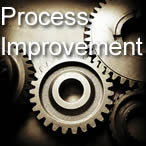Growth Requires Change
Businesses need to change if they want to grow. Change can be proactive or reactive, but without it everything stays the same and growth is impossible.
Many organizations have found to their detriment that it’s unwise to fail to anticipate changes in the external environment and suffer the consequences. Change has to be carefully planned and implemented with strict controls on both its extent and the pace at which it takes place.
First let’s look at changes that can happen to a business. These might take place over an extended period of time, often so slowly that management is unaware of the extent of the changes until it has been confronted with the unpleasant financial results.
- Team morale decreases and productivity declines
- Customers depart and sales decrease
- Costs rise and profitability suffers
Each of these change paths can happen gradually and unless management regularly monitors key business metrics and ratios they can cause an unpleasant awakening to reality. Isn’t it much better to plan positive changes to an organization and benefit from the outcomes?
Think instead of your business experiencing these kinds of change:
- Team morale is improved by a program that creates greater job satisfaction and productivity increases
- A customer relationship management system generates increased turnover and word-of-mouth brings in new customers
- Active management of costs and better purchasing policies reduce expenses and improve profitability
Plan and implement positive change
Where the first set of changes happened to a business and would be detrimental to growth, the second set of changes are the kind that are planned and create growth. Planning and implanting positive change is an essential element of management.
Yet change for its own sake can be a mistake. It’s important that when considering making changes to an organization the effects are fully identified and carefully analysed.
Discuss the proposed changes with two important groups of stakeholders – your customers and team members. The first group has to accept the changes or your sales will decrease; the second group has to accept them or they won’t happen in the manner you intend.
Betty Krecji of the Purdue University Department of Consumer and Family Sciences says that how one views change is dependent on many things:
The number of changes occurring at once – individuals can only handle so much change. The greater the number of changes occurring simultaneously, the more likely it is that they will be viewed negatively.
The pace at which change is occurring – the faster the changes come, the more difficulty we have in adjusting to them and the more likely we are to view change as loss.
The amount of control in times of change – the greater the involvement individuals have in making change, the greater their sense of control. The greater the sense of control, the more likely the change will be viewed as an opportunity.
Remember the human element
Communicate the planned changes internally before they happen. Change should never take place suddenly or unexpectedly; to do it this way is to invite rejection. All team members need to know what’s going to happen and why it’s a good idea.
Business owners often ignore the human element of change because they believe it can be created through giving orders. Positive and lasting organizational change isn’t like that; it’s ‘owned’ by the team and they get behind it to make it happen.
Don’t expect change to go as quickly or as smoothly as you’ve planned. No matter how much planning has gone into the process there will always be unforeseen forces that impact the success of the change effort.
Harvard Business School’s Todd Jick conducted a study that identified these problems that were experienced by a majority of firms implementing change:
- change took more time than allocated
- unforeseen problems surfaced
- coordination of implementation activities was ineffective
- competing crises distracted attention
- insufficient capabilities and skills of those involved in the implementation
- inadequate training was given
- uncontrollable external factors had a major adverse impact (eg. Competitive, government, economic)
- inadequate support for change
- failure to define expectations and goals clearly
- failure to involve all those who will be affected by change
Change for the right reasons and done the right way can be a powerful growth stimulant for any organization. Done badly, change can become a business disaster. Consider change carefully, analyse it as critically as possible, and implement it only after you’ve gained the support of stakeholders.








